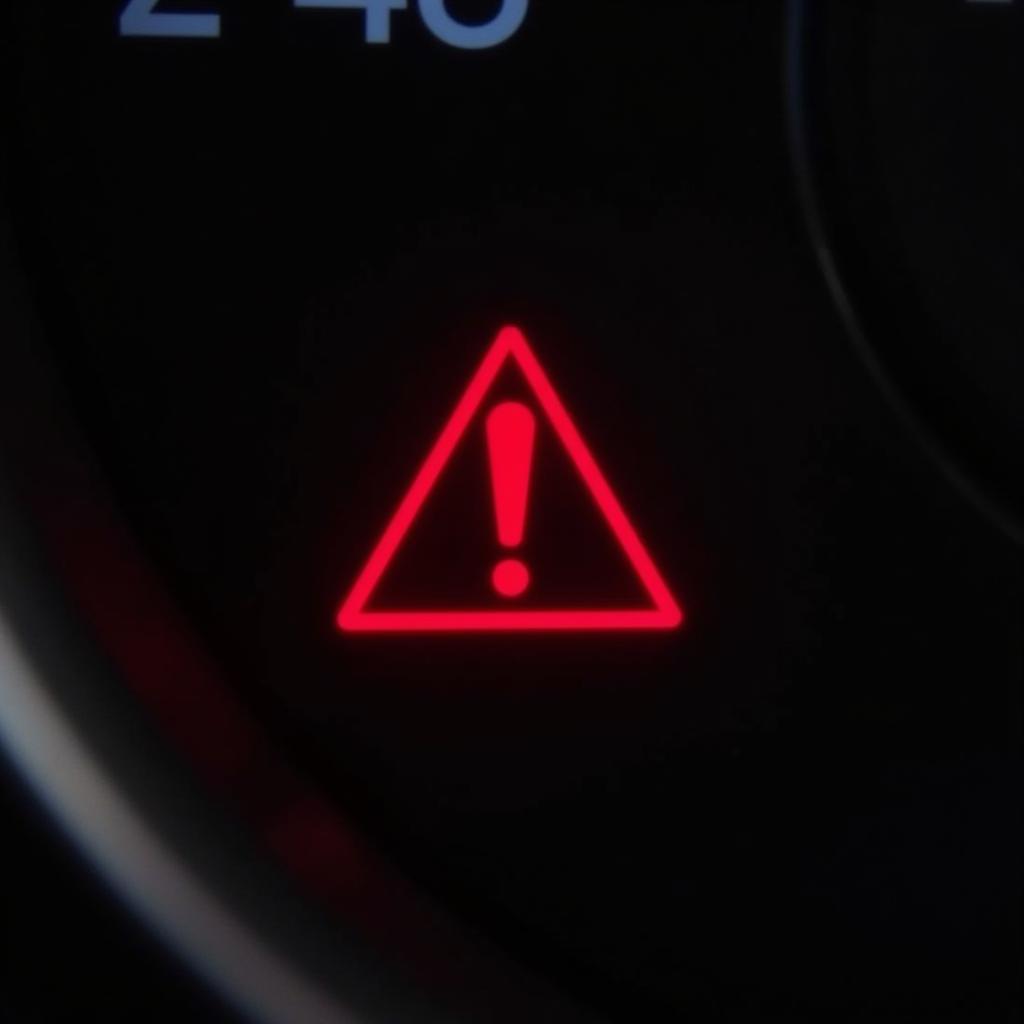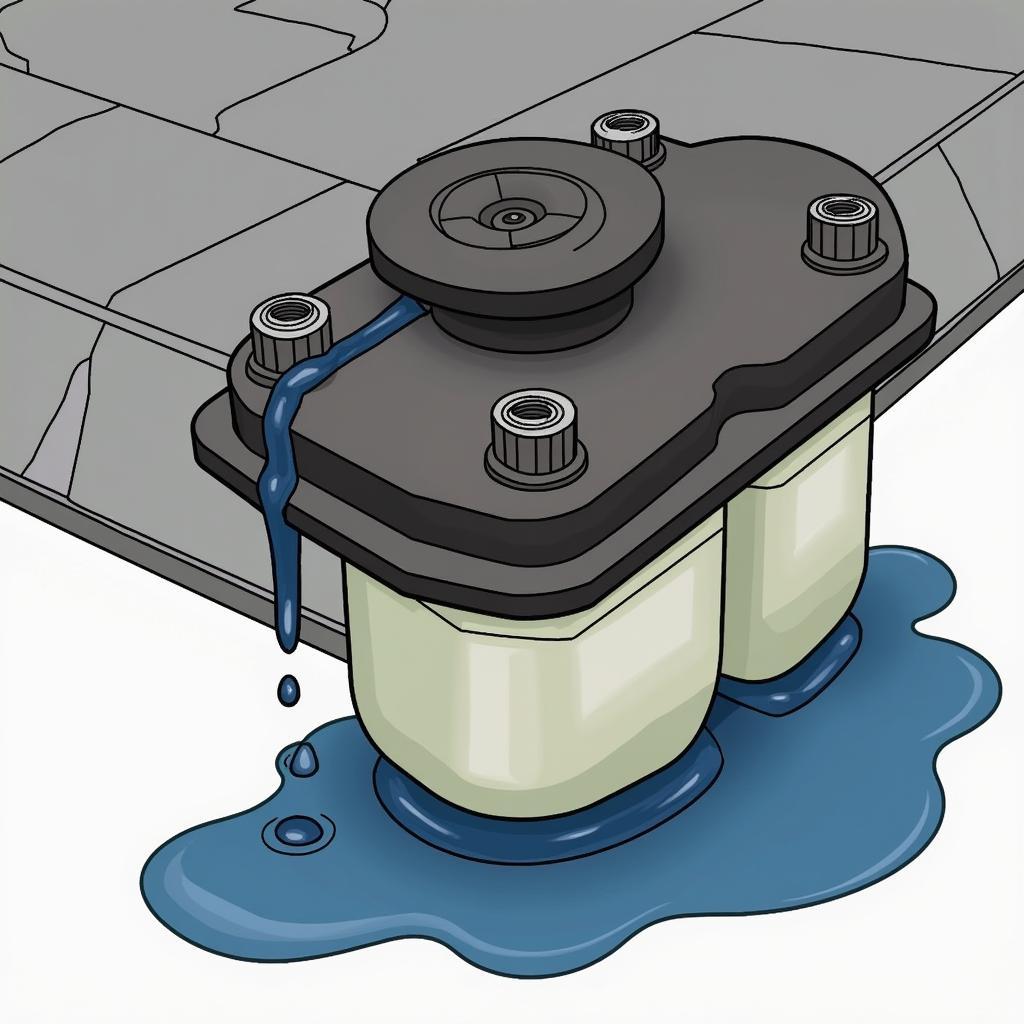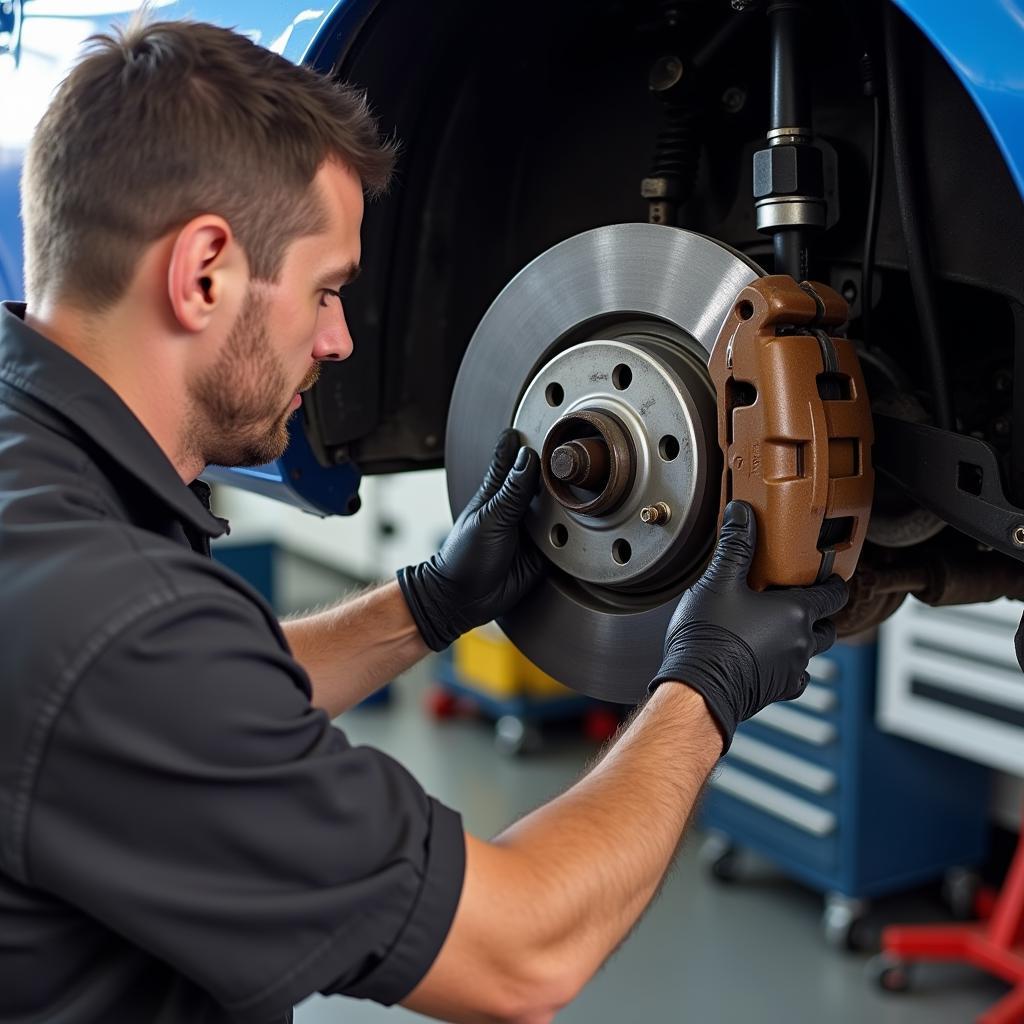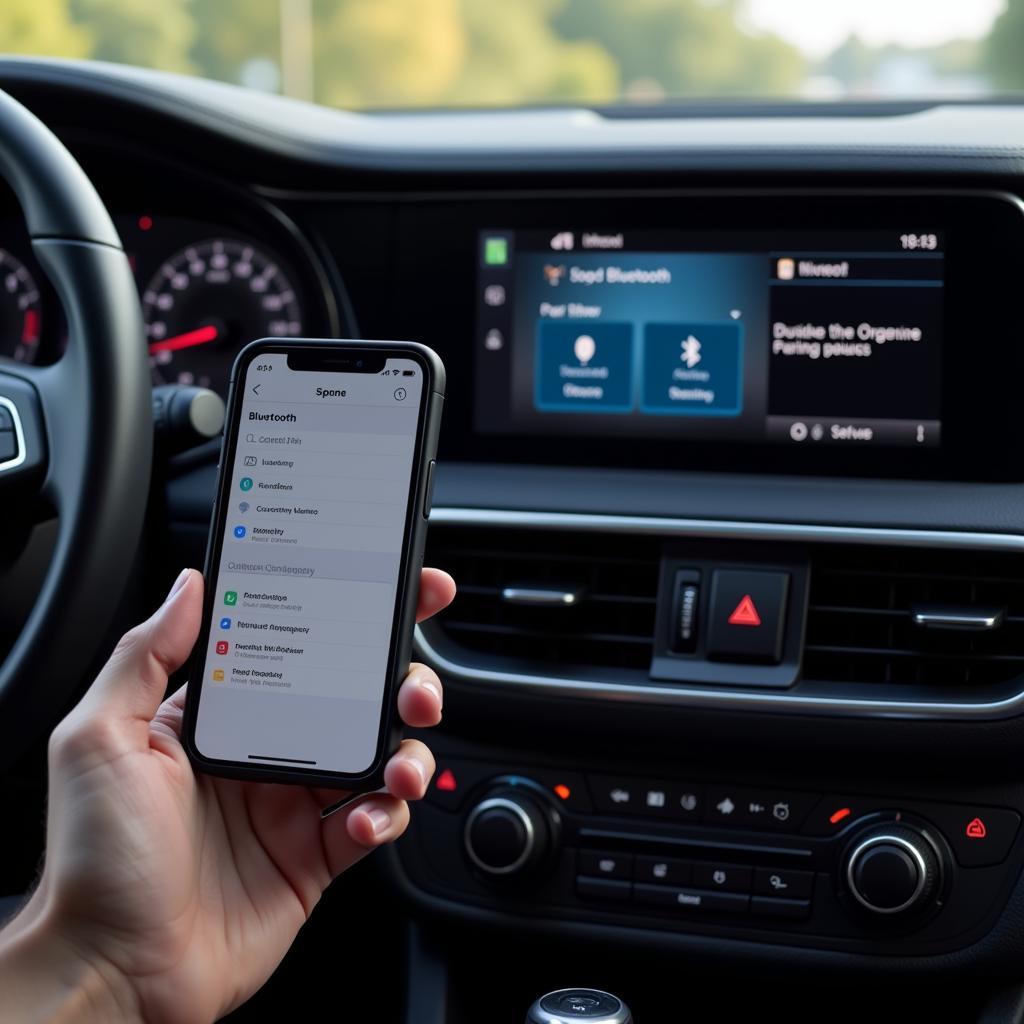The brake fluid level warning switch is a critical safety feature in your vehicle. It’s a simple device with a vital role: alerting you to a potential problem with your braking system. When illuminated, the brake warning light on your dashboard often signals a drop in brake fluid level, which could compromise your ability to stop safely.
What Triggers the Brake Fluid Level Warning Switch?
This switch is designed to activate in specific situations, primarily:
- Low brake fluid: A leak in the braking system or worn brake pads can cause the brake fluid level to drop, triggering the warning light.
- Faulty switch: Occasionally, the switch itself may malfunction due to wear and tear, electrical issues, or damage, leading to a false warning.
- Worn brake pads: While not directly related to the switch, excessively worn brake pads can cause the fluid level in the reservoir to drop, indirectly triggering the warning.
 Brake Fluid Level Warning Light
Brake Fluid Level Warning Light
Diagnosing a Brake Fluid Level Warning Light
Ignoring a glowing brake warning light can have serious consequences. If you see it, follow these steps:
- Check your brake fluid level. Park your car on a level surface and locate the brake fluid reservoir. (Refer to your owner’s manual for its location).
- Inspect the fluid level. Most reservoirs have minimum and maximum markings. If the fluid level is below the minimum, it needs to be topped up.
- Inspect for leaks. Look for any signs of brake fluid leaks around the reservoir, brake lines, and near the wheels.
- Consult a mechanic. If you notice a leak, your brake warning light remains illuminated even after topping up the fluid, or if you’re uncomfortable performing these checks yourself, consult a qualified mechanic immediately.
The Importance of Maintaining Adequate Brake Fluid Levels
Brake fluid plays a crucial role in your vehicle’s braking system. It transmits the force you apply to the brake pedal to the calipers, which then press the brake pads against the rotors, slowing down or stopping your vehicle.
When the brake fluid level is low, air can enter the braking system. Since air is compressible (unlike brake fluid), it reduces the hydraulic pressure required for effective braking. This can lead to:
- Soft or spongy brake pedal feel
- Reduced braking performance
- Complete brake failure
 Leaking Brake Fluid Reservoir
Leaking Brake Fluid Reservoir
Frequently Asked Questions about Brake Fluid Level Warning Switches
Q: Can I drive with a brake fluid level warning light on?
A: It’s strongly advised against driving with an illuminated brake warning light. It indicates a potential problem with your braking system, putting you and others at risk. Seek immediate mechanical assistance.
Q: How often should I check my brake fluid level?
A: It’s a good practice to visually check your brake fluid level at least once a month.
Q: Can I add any type of brake fluid to my car?
A: No, using the wrong type of brake fluid can damage your braking system. Refer to your owner’s manual for the recommended brake fluid type and specifications for your vehicle.
Q: How long does a brake fluid level warning switch last?
A: While these switches are generally durable, they can eventually fail. Their lifespan varies depending on factors like driving conditions and vehicle usage.
Q: Can I replace the brake fluid level warning switch myself?
A: While possible, it’s generally recommended to have a qualified mechanic handle the replacement to ensure it’s done correctly.
gmc c5500 brake warning light with wrench
Maintaining a Safe Ride: The Role of Regular Maintenance
Regular car maintenance, including brake system inspections, is crucial for your safety on the road. A well-maintained braking system ensures optimal performance and helps prevent unexpected and potentially dangerous situations.
Remember, “A stitch in time saves nine” holds particularly true when it comes to car maintenance. Addressing minor issues promptly can prevent them from escalating into major, costly problems down the line.
volkswagen brake warning light stays
 Car Brake System Inspection
Car Brake System Inspection
A properly functioning brake fluid level warning switch acts as your first line of defense against potential brake failures. Addressing any issues with your braking system promptly ensures your safety and that of your passengers.

